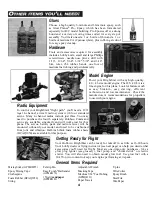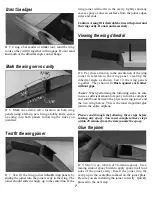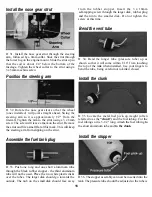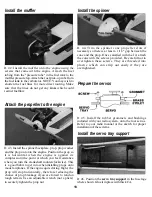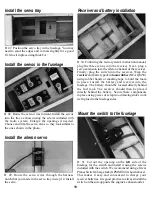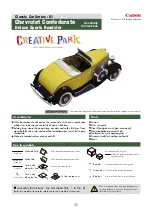
Even the edges
D 5. Using a bar sander or similar tool, sand the wing
roots so they will fit together with no gaps. Do not sand
too much or the dihedral angle could change.
Mark the wing servo cavity
D 6. Mark the aileron servo location on both wing
panels using a felt-tip pen. Using a hobby knife, cut an
opening into both panels following the lines you
just drew.
wing joiner will not fit in the cavity, lightly sand any
excess epoxy or uneven surfaces from the joiner edges,
sides and ends.
Caution: A snug fit is desirable between the joiner and
the wing cavity. Do not sand excessively.
Viewing the wing dihedral
D 8. Pay close attention to the orientation of the wing
joiner in relation to the wing panel, creating the
dihedral angle as shown. Test fit the wing panels
together. They should fit flush against each other
without gaps.
Note! When performing the following steps, be sure
to use a sufficient amount of epoxy to form a complete
and solid bond between the plywood wing joiner and
the two wing halves. This is the most important glue
joint in the entire airplane.
Please read through the following three steps before
mixing any epoxy. You must complete these steps
within 20 minutes from the time you mix the epoxy.
Glue the joiner
Test fit the wing joiner
D 7. Test fit the wing joiner in both wing panels by
sliding the joiner into the joiner cavity in the wing. The
joiner should slide in snugly up to the centerline. If the
D 9. Mix 3/4 oz. (22ml) of 30-minute epoxy. Use a
mixing stick or epoxy brush to apply epoxy to all four
sides of the joiner cavity. Insert the joiner into the
cavity up to the centerline marked on the joiner plate.
Be sure you are installing the joiner correctly. Quickly
proceed to the next step.
7




